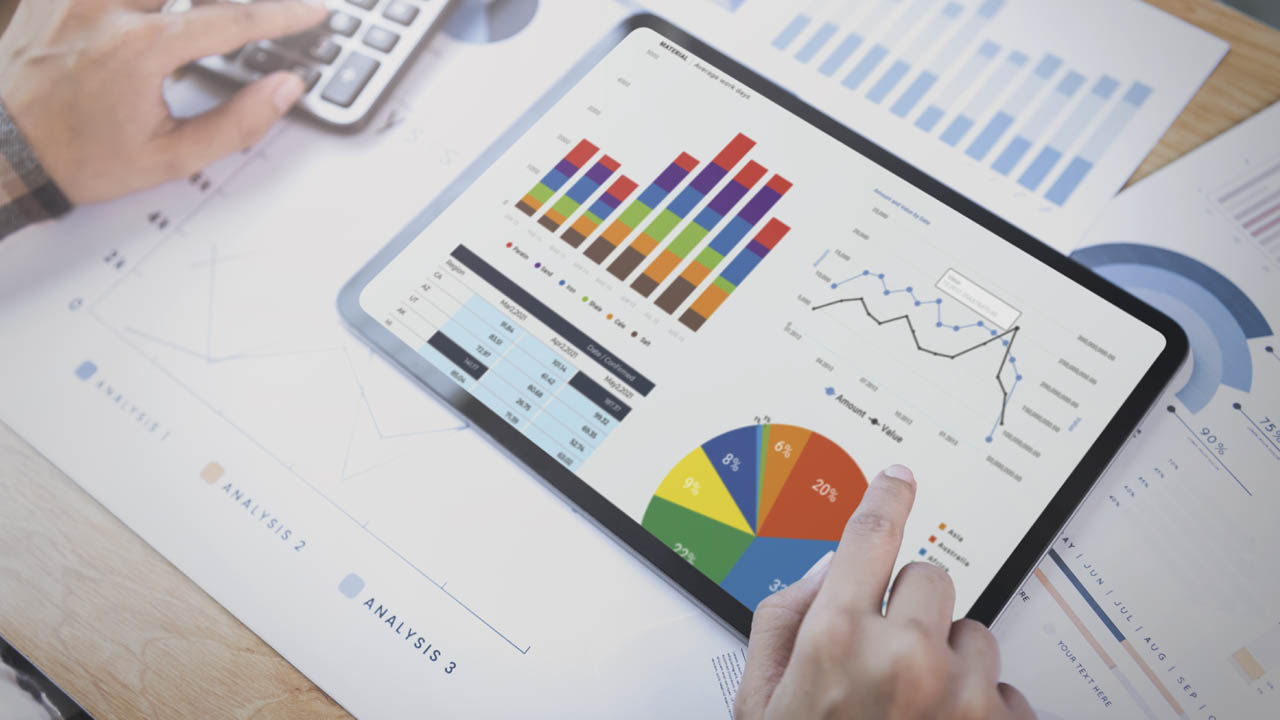- thinkadomain
- 0 Comments
- 4447 Views
Data ROI is a critical measure for businesses to evaluate the success of their data and analytics projects. It is the return on investment or the value of the project in relation to the cost of the data and analytics project.
As businesses strive to create more value from their data, understanding how to calculate and estimate the value of these projects is essential for measuring success.
This article explores the importance of data ROI and provides some tips and strategies for estimating the value of data and analytics projects. It explains how to identify the right metrics and KPIs to measure data ROI, what data sources to use to assess the value of a project, and how to factor in hidden costs and benefits when evaluating data ROI.
It also provides insights into understanding the financial implications of a project and how to calculate the return on investment. With these strategies, businesses can make more informed decisions on which data and analytics projects to pursue and how to optimize their data investments.
Steps for Estimating Data ROI
Data ROI is a key metric for any business. It helps to quantify the value of data and understand how investments in data collection and analysis can help improve the bottom line.
1. Identify Data Points
The first step in estimating data ROI is to identify the data points that are most relevant to your business. This includes data such as customer demographics, product usage, and customer satisfaction.
This helps to ensure that the project is aligned with the overall business strategy and that the outcomes will be meaningful and valuable. It is important to involve key stakeholders in the goal-setting process to ensure buy-in and support for the project.
2. Determine The Cost
Once the relevant data points have been identified, the next step is to determine the cost of collecting and analyzing the data. This includes costs such as hiring data analysts, purchasing software and hardware, and any other associated costs. It is important to be as accurate as possible when calculating costs to ensure that the ROI calculation is accurate.
3. Measure and Track KPIs
Next, it is important to measure and track key performance indicators (KPIs) to determine the success of the project. These KPIs should be directly related to the goals and objectives of the project and should be used to track progress and measure the outcomes of the project. For example, if the goal of the project is to improve customer retention, then a KPI might be the customer retention rate.
4. Calculate The Expected ROI
The fourth step is to calculate the expected return on investment (ROI) for the data that has been collected. This is done by multiplying the cost of collecting and analyzing the data by the expected return on the data. For example, if the cost of collecting and analyzing customer demographic data is $10,000 and the expected return on the data is $20,000, then the data ROI is 2:1.
5. Identify Risks
The fifth step is to determine the risks associated with collecting and analyzing the data. This includes risks such as data security, compliance with privacy regulations, and the cost of incorrect data. Once the risks have been identified, it is now time to decide whether the data ROI justifies the risks. If the ROI is greater than the risks, then the data should be collected and analyzed.
6. Track Data
Finally, the last step is to track the data ROI over time. This will help to identify any areas where improvements can be made and ensure that the data collection and analysis is providing value to the business.
Common Methods for Measuring Data ROI
Data ROI, or return on investment, is an important metric for any business. It’s a measure of how well the investment of time, money, or resources has paid off. It’s important to know how much of a return you’re getting from any investment, and measuring data ROI is a great way to assess the effectiveness of your data-driven efforts.
One of the most common methods for measuring data ROI is calculating the cost-benefit ratio. This is done by considering the cost of the data-driven effort and comparing it to the benefits that were gained. If the benefits outweigh the costs, then the data-driven effort has been successful, and the ROI is positive. If the costs outweigh the benefits, then the ROI is negative.
Another common method for measuring data ROI is measuring the overall impact of the data-driven effort. This means looking at the changes that have occurred since the data-driven effort was implemented.
For example, if the data-driven effort was meant to increase customer satisfaction, you can measure the overall customer satisfaction scores before and after the effort was implemented. If the scores have increased, then you can assume that the data-driven effort was successful and the ROI is positive.
A third common method for measuring data ROI is to look at the return on assets. This is done by considering the cost of the data-driven effort and comparing it to the assets that have been acquired as a result.
If the assets acquired are worth more than the cost of the effort, then the ROI is positive. If the assets acquired are worth less than the cost of the effort, then the ROI is negative.
Finally, one of the most common methods for measuring data ROI is to calculate the payback period. This is done by considering the cost of the data-driven effort and comparing it to the amount of time it takes for the return on the effort to start materializing.
If the return starts materializing quickly, then the ROI is positive. The ROI is negative if it takes a long time for the return to start materializing.
These are some of the most common methods for measuring data ROI. Knowing how to calculate the ROI of a data-driven effort is an important part of making sure that the effort is successful and worth the investment. Using these methods, you can ensure that your data-driven efforts are worth the time and money invested in them.
Best Practices for Maximizing Data ROI
It is important to prioritize data and analytics projects that align with business goals to maximize data ROI. This helps to ensure that the project will have a meaningful impact on the organization and that the outcomes will be valuable.
Building a strong data governance framework is also important for maximizing data ROI. This helps to ensure that the data being used is accurate, reliable, and compliant with industry standards and regulations.
Investing in the right technology and talent is crucial for the success of a data and analytics project. The right technology can help to automate data processing and analysis, while the right talent can ensure that the project is executed correctly.
Data Governance for Data ROI
Data governance is the process of managing the availability, usability, integrity, and security of the data used in an organization. It is a critical aspect of maximizing the ROI of data and analytics projects. A strong data governance framework ensures that the data being used is accurate, reliable, and compliant with industry standards and regulations.
A good data governance framework should include several key elements, such as data quality, lineage, security, and access control. Data quality ensures that the data is accurate, complete, and consistent.
Data lineage helps to trace the origin and history of data. Data security ensures that the data is protected against unauthorized access, while data access control ensures that only authorized individuals have access to specific data.
It is essential to appoint a data governance team and establish clear roles and responsibilities to implement data governance in an organization.
The team should also establish policies and procedures for data management, including data quality, security, and access control. Additionally, it is important to provide training and awareness programs for employees to ensure that they understand their responsibilities and the importance of data governance.
Real-world examples of Data ROI
Predictive maintenance is a use case where data and analytics are used to predict when equipment or machinery is likely to fail so that it can be scheduled for maintenance before it breaks down.
This can help organizations to reduce downtime, increase efficiency, and reduce costs. For example, an airline company used predictive maintenance on their aircraft engines, which resulted in a 30% reduction in maintenance costs and a 15% increase in aircraft availability.
Customer segmentation is another example of a data and analytics use case that can drive significant ROI. By using data to segment customers into different groups, organizations can create targeted marketing campaigns and improve the customer experience.
A retail company used customer segmentation to identify its most profitable customers, which led to a 10% increase in sales.
Fraud detection is a data and analytics use case that can help organizations identify and prevent fraudulent activity. Organizations can detect patterns and anomalies that indicate fraudulent activity by analyzing data from multiple sources. For example, a bank used fraud detection to identify and prevent fraudulent transactions, which resulted in a 50% reduction in losses due to fraud.
Data and analytics projects can provide significant value to organizations, but it is important to estimate and measure the ROI of these projects. By following a structured approach to estimating and measuring data ROI, organizations can make more informed decisions about where to invest their resources.
Data governance is also an important aspect of maximizing data ROI. A strong data governance framework helps to ensure that the data being used is accurate, reliable, and compliant with industry standards and regulations.
By implementing best practices, such as prioritizing projects that align with business goals, building a strong data governance framework, investing in the right technology and talent, and continuously monitoring and improving performance, organizations can maximize the ROI of their data and analytics projects.

